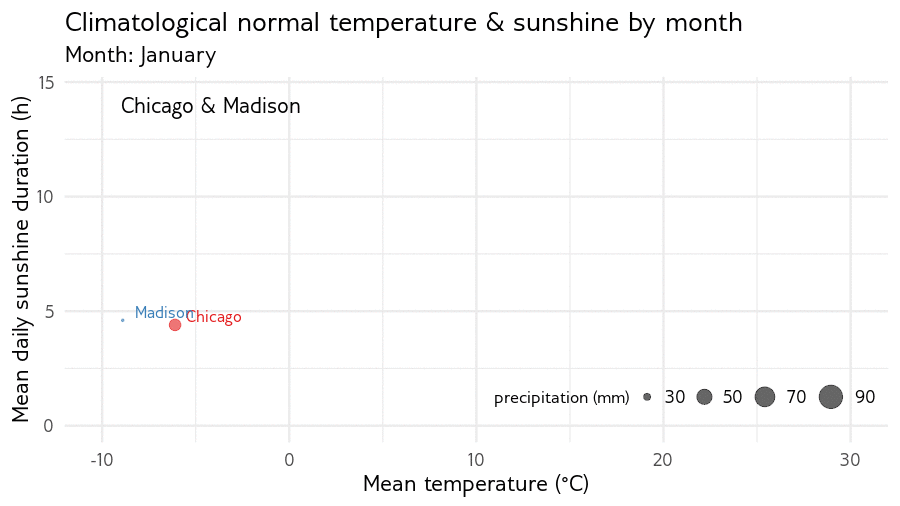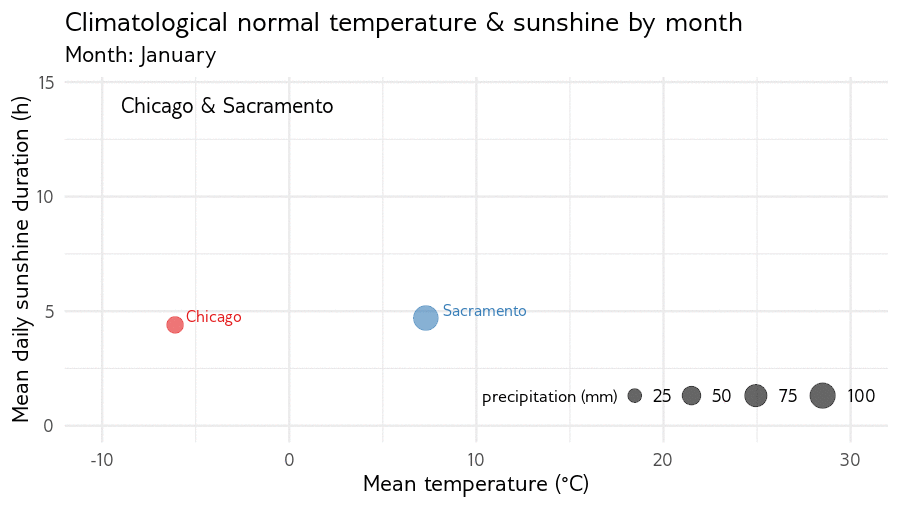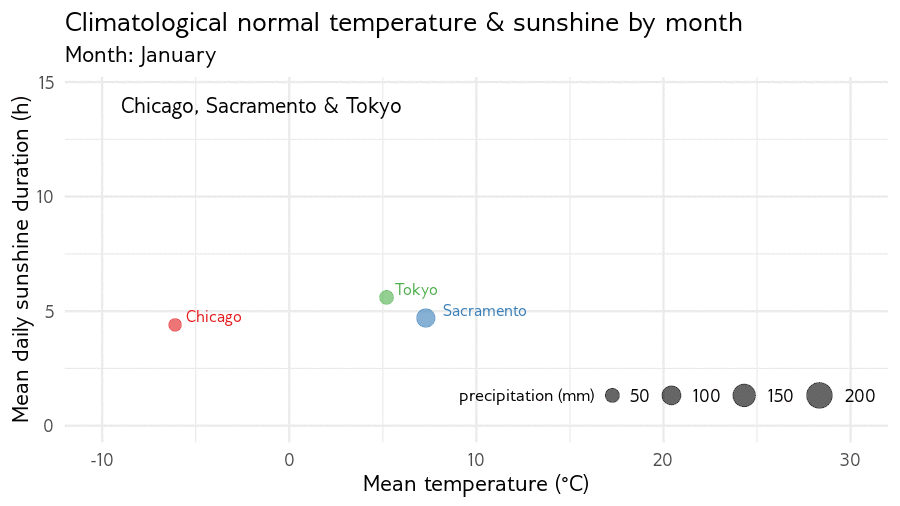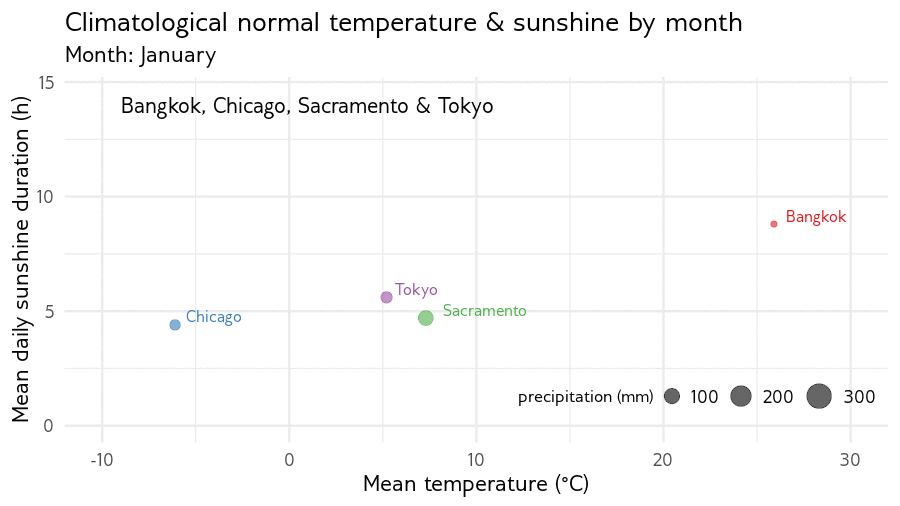I’ve written before about the environmental productivity index (EPI), the growth potential, and nutrients. Park Nobel’s EPI “incorporates simultaneous effects of water, temperature, PAR [photosynthetically active radiation], and even nutrients” to predict the productivity, or the rate of generation of biomass.
Turfgrass managers can modify the plant water status with drainage and irrigation. They can modify the nutrient supply with fertilizer—I recommend using MLSN for that. But they can’t do much to modify the temperature or the PAR. That’s where the effect of climate comes into turfgrass management and species selection.
I like to visualize this for a location by plotting temperature and sunshine hours in a two-dimensional space. Sunshine hours serve as a proxy for PAR.
By plotting temperature and sunshine together, one gets a graph of the normal conditions at any location. I’ve added normal precipitation to these charts to show, by the size of the point, the normal precipitation at that time of year.
Here are two locations that have a similar climate—Chicago, Illinois and Madison, Wisconsin.

You’ll notice that the track of temperature and sunshine hours through the year is almost the same at these locations. When the combination of light and temperature is the same, one expects similar grasses to grow, and management requirements to be similar too.
Now compare Chicago and Sacramento, and you’ll see that there is not nearly the amount of overlap as was seen with Chicago and Madison.

And here’s one that might shock you. Tokyo has such a low amount of sunshine that it doesn’t have much overlap with either Chicago or Sacramento. And the tiny bit of overlap is in the winter, when cool-season grasses won’t be growing much and warm-season grasses will be dormant.

During the growing season, when temperatures are high, Chicago and Sacramento have a little overlap with each other, but none with Tokyo.
Adding on a tropical location such as Bangkok, Tokyo in mid-summer has a little bit of overlap with that climate.
